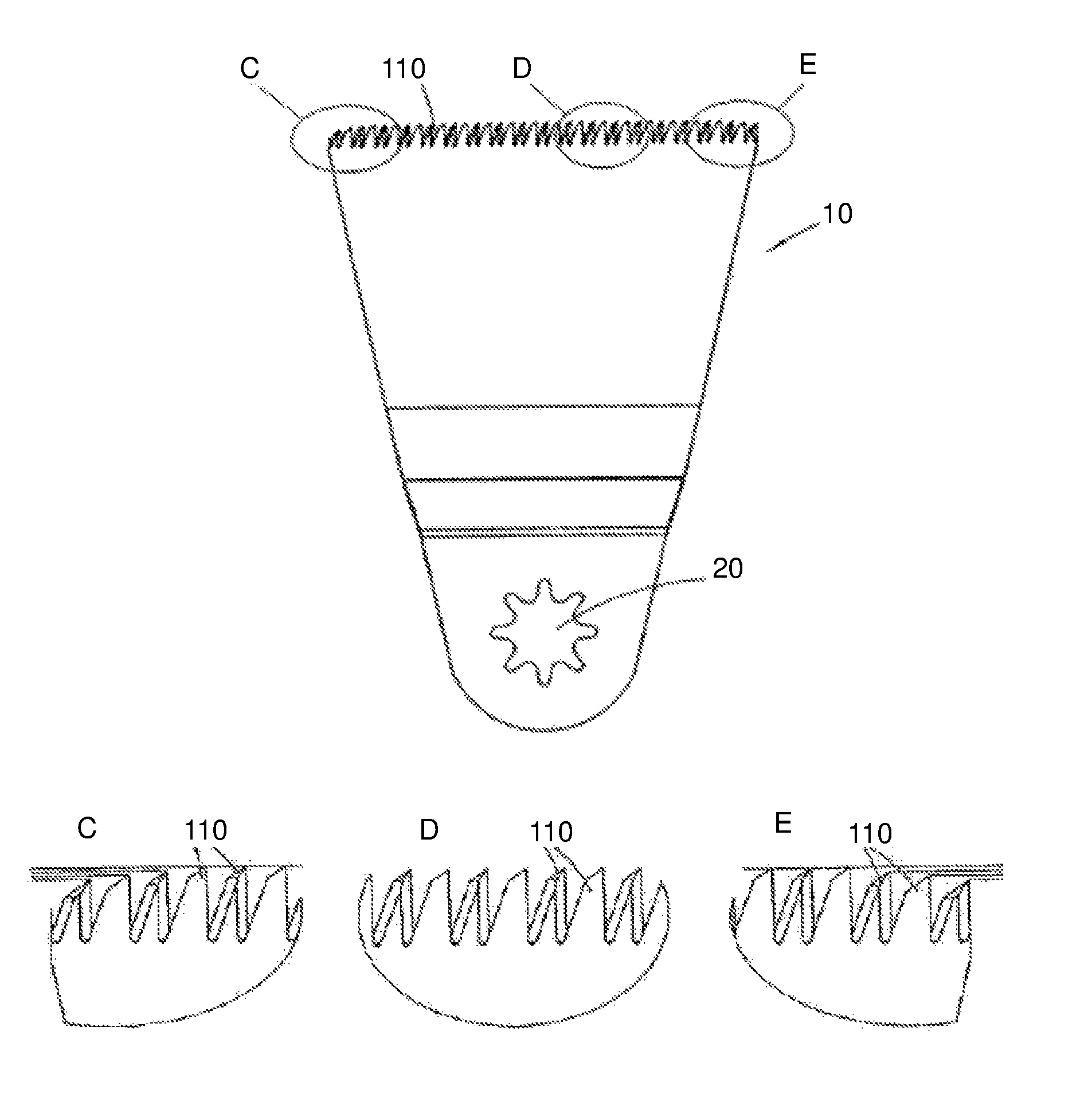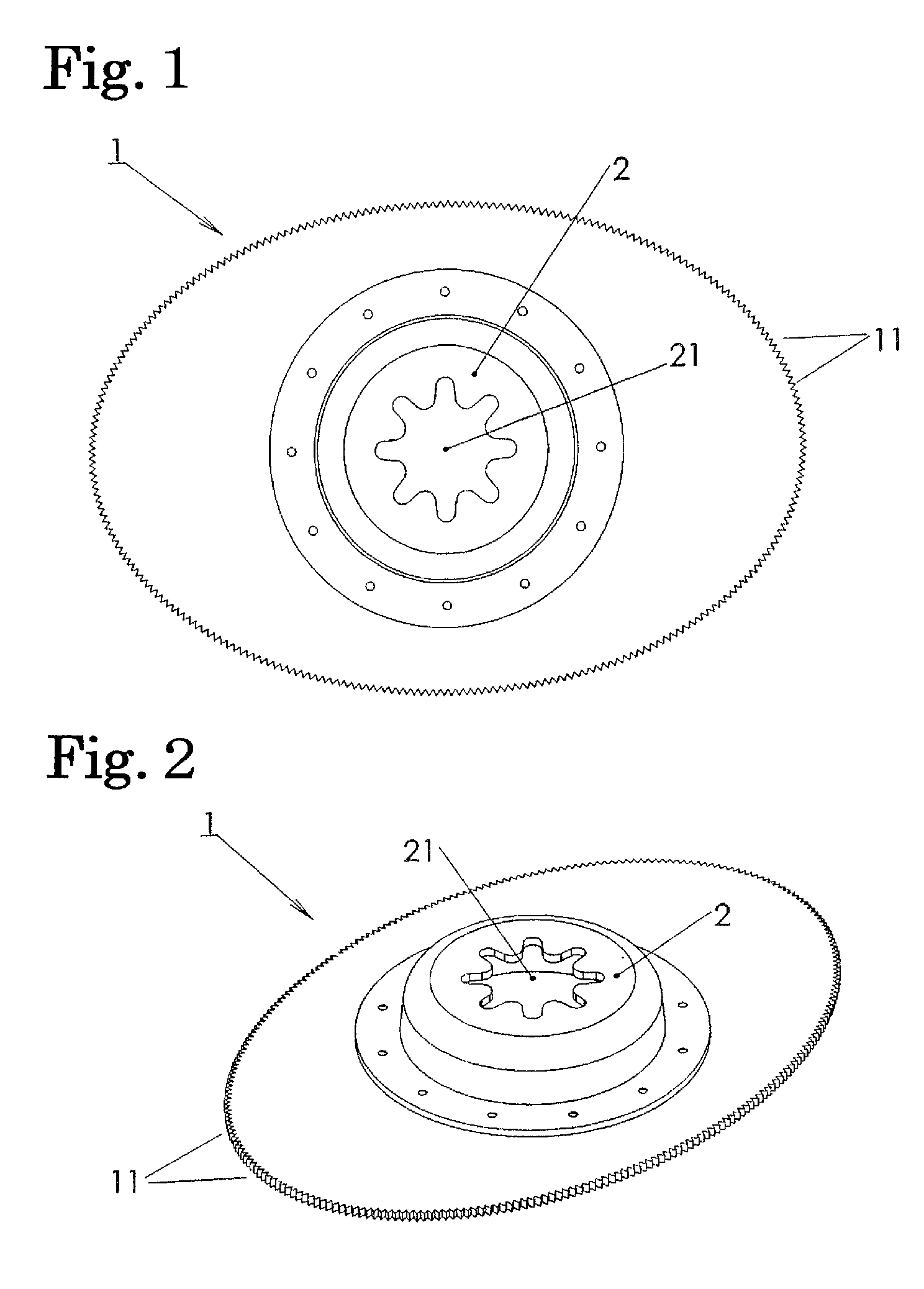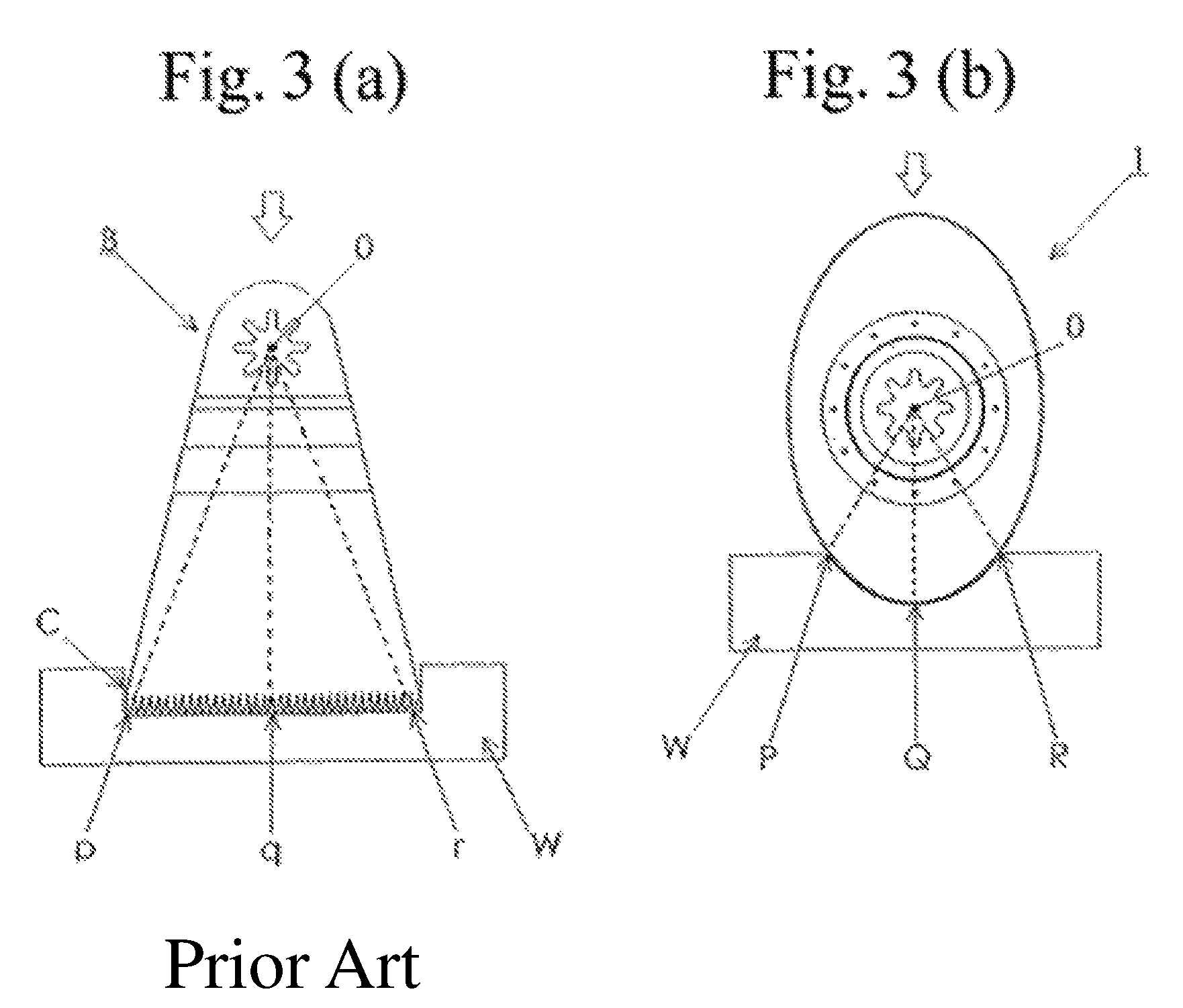Saw blade
a saw blade and blade technology, applied in metal sawing tools, metal sawing equipment, metal-working equipment, etc., can solve the problems of deteriorating working conditions, unidirectional rotation of blades, and high cutting ability of both types of saws,
- Summary
- Abstract
- Description
- Claims
- Application Information
AI Technical Summary
Benefits of technology
Problems solved by technology
Method used
Image
Examples
example 1
[0034]FIGS. 1 and 2 show an example of a saw blade 1 according to the present invention (called hereunder the saw blade 1), FIG. 1 being a plan view and FIG. 2 a perspective view. As seen from the drawings, the saw blade 1 in this example is generally elliptic in shape.
[0035]The saw blade 1 is a saw blade to be mounted to a tool having a drive shaft of a quality to make an arcuate swing (for example, the tool shown in FIG. 6). The central angle of the arcuate swing in this example is 1.6 degree.
[0036]Cutting teeth 11 are formed on the whole of the elliptic periphery of the saw blade. Teeth 11 are each symmetrically formed at the left and right sides with respect to a line connecting the center of the arcuate swing with crests of the teeth. Thus, there is not caused any difference of the cutting capability in the reciprocation upon the arcuate swing. The number of the cutting teeth 11 is about 250 in this example which is more than twice in comparison with the number of cutting teeth...
example 2
[0048]FIG. 4 is an explanatory view showing another example of a saw blade 10 according to the present invention (called hereunder the saw blade 1), FIG. 4(a) being a schematic plan view and FIG. 4(b) a schematic side view. A saw blade 10 is a saw blade to be mounted to a tool having a drive shaft of a quality to make an arcuate swing (for example, the tool shown in FIG. 6). The saw blade 10 is connected and fixed, at its coupling part 20 to the drive shaft of the tool. Besides, the saw blade 10 is provided with cutting teeth 110 at a remote end opposite to the coupling part 20.
[0049]In this example, the central angle of the arcuate swing is 1.6 degrees.
[0050]The cutting teeth 110 are arranged in a line but are not uniform in height with teeth near and at both ends of the saw blade being smaller in height. FIG. 5 is an enlarged view of the parts C, D, E shown in FIG. 4(a), showing the cutting teeth 110 around the central region (part D) of the saw blade 10, around the right end (par...
PUM
| Property | Measurement | Unit |
|---|---|---|
| swing angle | aaaaa | aaaaa |
| swing angle | aaaaa | aaaaa |
| swing angle | aaaaa | aaaaa |
Abstract
Description
Claims
Application Information
 Login to View More
Login to View More - R&D
- Intellectual Property
- Life Sciences
- Materials
- Tech Scout
- Unparalleled Data Quality
- Higher Quality Content
- 60% Fewer Hallucinations
Browse by: Latest US Patents, China's latest patents, Technical Efficacy Thesaurus, Application Domain, Technology Topic, Popular Technical Reports.
© 2025 PatSnap. All rights reserved.Legal|Privacy policy|Modern Slavery Act Transparency Statement|Sitemap|About US| Contact US: help@patsnap.com



